When doing any kind of welding, metal pieces must have a specific temperature to avoid weld failure.
When welding thin mild steel, you won’t need to do any preheating most of the time. However, even the light mild steel may need to be heat treated depending on the ambient temperature.
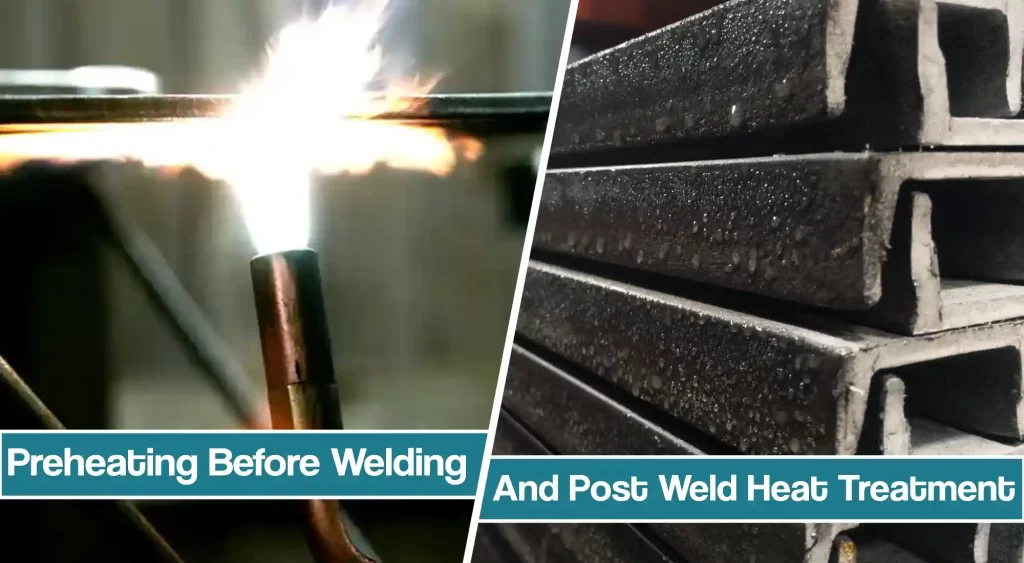
Metal type, thickness, current metal temperature, ambient temperature, and welding process determine the required preheat temperature.
In this article, you will learn how to preheat different metal types and why, determine the metal temperature, and other vital elements of the preheating process.
Preheating The Metal Before Welding
Preheating the metal is usually an important part of the Welding Procedure Specification. But just because it’s part of the WPS doesn’t mean that everyone understands the details and why the preheating is necessary.
So, let’s start with the reasoning behind it.
Reasons Why Metal is Preheatied Before Welding
The overall goal is to reduce the chance of cracking and improve the weld fusion quality.
This boils down to the five main reasons to preheat the weld metal:
- By raising the metal temperature, you will slow down the weld cooling rate. This reduces hardening, improves ductility, and prevents cracking of the weld and the heat-affected zone.
- A slower cooling rate helps hydrogen escape the weld. Hydrogen causes cold cracking when present in the weld or HAZ. Additionally, any surface moisture will vapor before welding. So, the hydrogen originating from condensate will not be an issue.
- Preheating reduces the shrinkage stresses in the weld and surrounding metal. This is especially important when dealing with highly restrained joints. The weld bead will pull adjacent metal from the HAZ towards it as it cools down. As a result, strong internal shrinkage stress will cause distortion, cracking, and formation of martensite. If the metal is preheated to the proper temperature, the adjacent metal will cool at the same rate as the weld joint and minimize the thermal gradient.
- Some steels require preheating above specific temperatures to avoid brittle fractures in fabrication or achieve particular mechanical properties like notch toughness.
- Preheating the metal improves weld penetration. That’s because your welding arc doesn’t need to be as hot to penetrate the metal thanks to the smaller temperature difference between the welding arc and the metal. This is especially important with thick metals and quickly heat-conducting metals like aluminum.
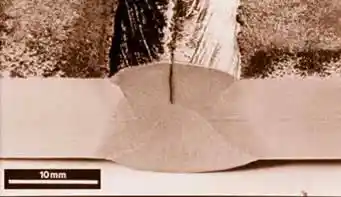
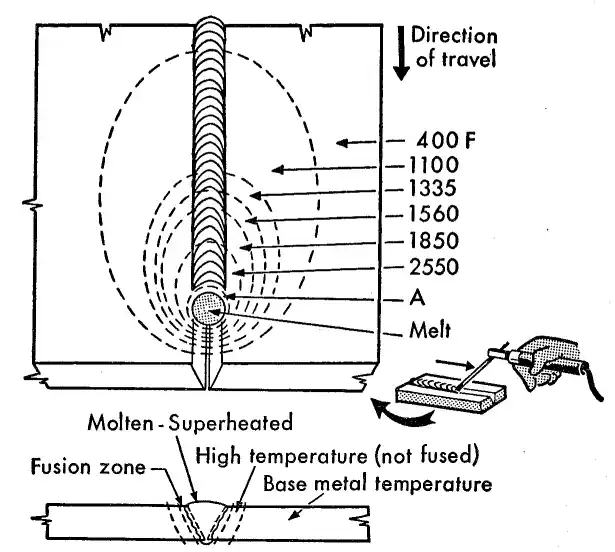
How to Determine If You Should Preheat
Whenever we weld high-strength steels or any thicker sections, we must preheat the weld joint and surrounding area. When working with 3/4″ or thicker, preheat is necessary to achieve good quality welds.
You will preheat most of the time because you need to abide by the code, standards, and WPS. It’s an important step in welding preparation overall.
In such cases, you will have a clearly defined preheat temperature, interpass temperature (explained below), and the distance from the weld joint that needs to receive the same heat treatment.
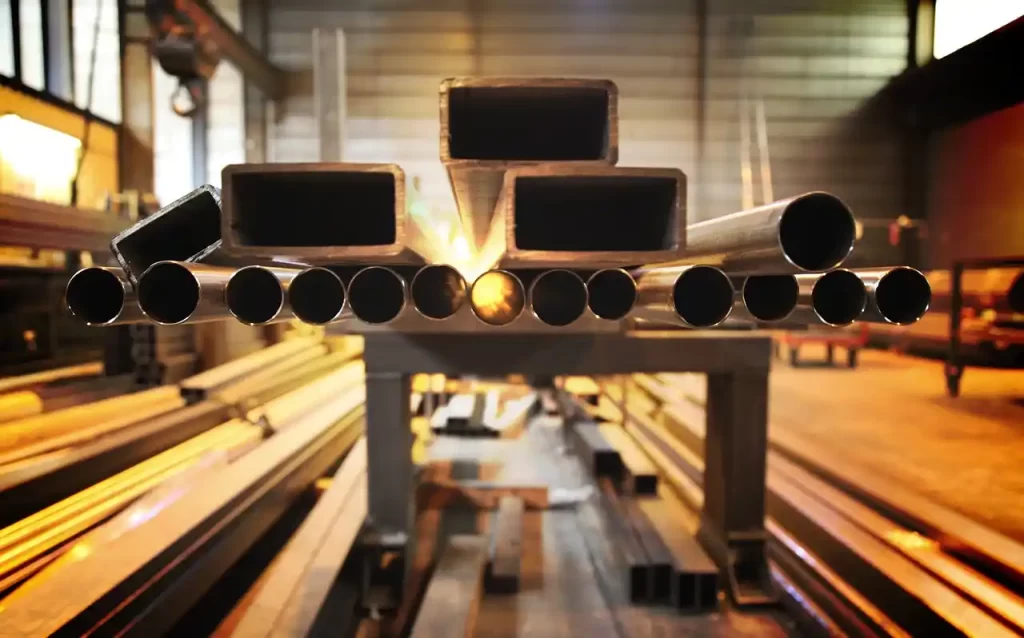
Additionally, the job specification may outline how long the part must be kept at the specific temperature range before welding.
Commonly welded materials that require preheating are different steels, cast iron, aluminum, and copper.
The factors that increase the need for preheating are:
- Material thickness
- Heat conductivity
- Joint restraint
- Material brittleness
- High-carbon content
- High manganese content
- Low atmospheric temperature
- Low temperature of the welded piece
- Small welding rod diameter
- High welding speed
- High difference in mass between the two pieces
- Welding dissimilar materials
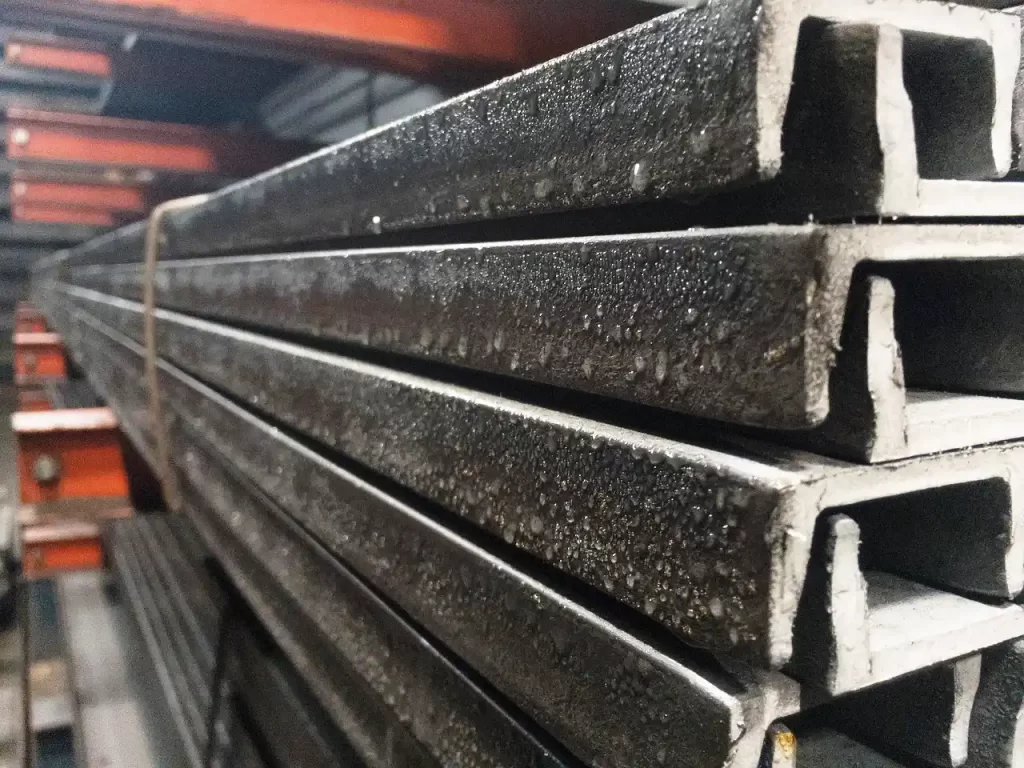
What is Interpass Temperature
Interpass temperature is the temperature measured between each weld pass. When doing multi-pass welds, it is important for the interpass temperature to stay the same as the preheat temperature or have a set value by the code, material specification, or WPS.
As all deposited weld metal runs will have the same hydrogen deposit, composition, and cooling capacity, you should ensure the same preheat temperature between each weld pass. The minimum interpass temperature, equivalent to the preheat temperature, helps hydrogen diffusion and reduces stresses.
However, different metals have different needs. So a high alloy material may require the weld to cool between passes to below the transformation temperature. Otherwise, if the interpass temperature is too high, the material in the weld will remain austenitic. This will lead to a slower diffusion rate of hydrogen, and more of it will stay stuck in the metal structure, which will lead to porosity and hydrogen cracking.
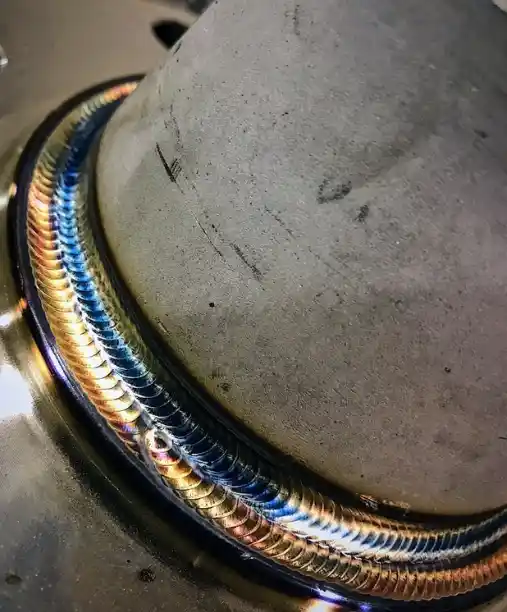
Additionally, when welding dissimilar metals or different alloys together, you must act according to the metal specification sheets. For example, A514 steel will have a significantly lower maximum interpass temperature than the AISI 1050 carbon steel. Working with a higher than allowed temperature will be detrimental.
It’s also important to note that the inter-pass temperature should be measured just before the next weld bead is placed. Don’t wait around after you measure it and let it cool down.
How To Measure Metal Temperature When Preheating – Crayons, Thermocouples, Infrared Thermometers and Cameras
There are multiple ways to measure the metal temperature varying in their accuracy. Welders typically use temperature verification tools like thermo crayons, thermocouples, thermal imagining cameras, and infrared thermometers.
Temperature indicating crayons are the most popular choice for welding shops when you don’t need precise measurements. These crayons work best when you have to reach a specific minimum elevated temperature and if it’s not detrimental if you go beyond it.
They range from 38°C (100°F) to approximately 1370°C (2500°F). So, you should probably have a few of these within the temperatures you are typically working with.
If you work with sensitive metals, strict codes, and WPS, you should have a proper thermal measuring device like an infrared thermometer. Such devices allow for precise measurement at any time. Thermal imagining cameras offer an even better solution because they can show the entire temperature gradient of the metal.
Preheating Weld Metal Methods – Flame, Induction, Ovens and Resistance Heating
There are numerous welding preheat methods, but four are commonly used. You can either preheat the entire part or apply heat to the joint and surrounding area.
The preheating method should be selected depending on the required accuracy, material thickness, size of the piece, maximum preheat temperatures, and available equipment. Precise temperature accuracy is typically not required when welding regular carbon steels.
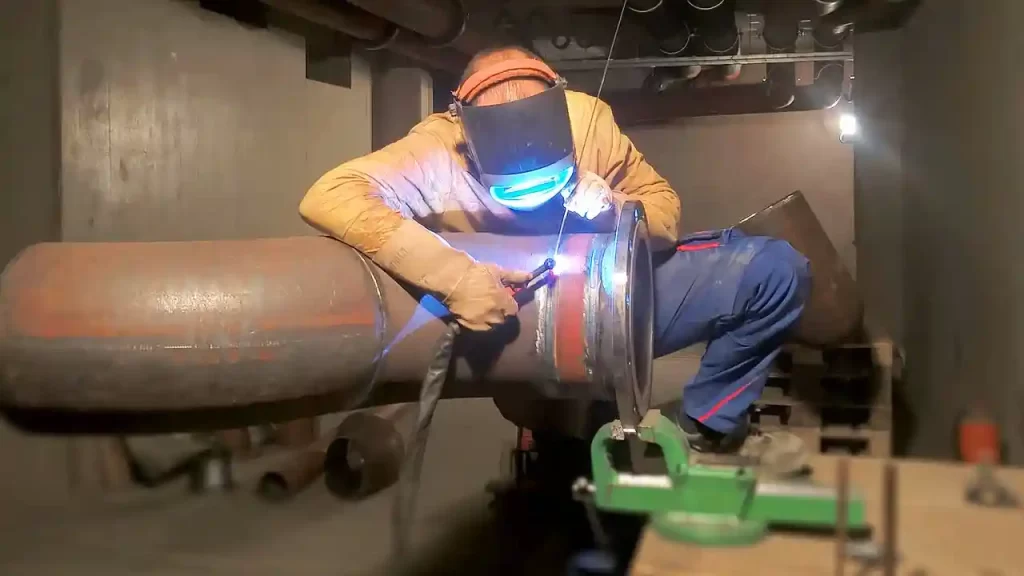
But the situation gets more complex with quenched and tempered steels. This is where you’ll have to use precise heat applying and measuring methods because overheating can be harmful in the HAZ.
The AWS D1.1 code dictates that the minimal preheat temperature needs to be measured in all three directions from a distance of no less than 3in. of the welding joint. Additionally, if welding sections are thicker than 3in, the minimal distance is the equivalent of the piece thickness. So basically, you have to heat everything to the preheat temperature in every direction from the joint.
The weld joint and surrounding area need to be evenly preheated. If you make an intense non-uniform thermal gradient, you’ll actually do more harm than good. Uneven heating can cause warping, distortion, and high residual stress.
Additionally, you should apply the heating source to one side of the material and measure the temperature on the other. That way, you will make sure the temperature actually breaches the opposite side and that the part is heated evenly.
Most people will use an open flame to preheat the metal for shop and field welding. So, let’s start with that method first.
Open flame
Flame preheating is the most accessible preheating method that can heat the whole part (depending on its size) or heat the joint and HAZ.
A welder will simply use the oxy-acetylene (or other fuel gas) set up to heat the part with the compressed air torch.
Typically rosebuds torches are used, and the welder applies the heat directly to the metal. It works best for flat plates but also other shapes because the flame can encompass almost any weld area.
one misconception that you should know about this heating method. You are likely to see water forming on the metal’s surface, otherwise known as “sweating the steel.” Some people believe that they are driving the water out from the steel, which is impossible, as it doesn’t contain any water.
What actually happens is that the water forms on the surface of the metal as a result of condensation. Hydrocarbon torch fuels have water as the byproduct, and the cold metal surface will typically attract it on the surface in the surrounding area from where you apply the flame. Just apply some flame on it too, and it will vapor.
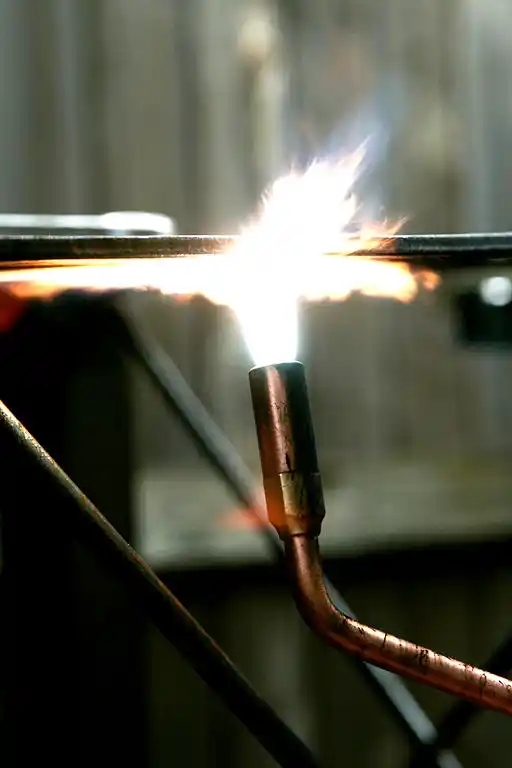
Since many welders already have a torch setup, they can preheat the metal without any additional investments. However, gas prices can pick up fast, especially since this is a very inefficient method. You have to apply the flame for a long time as a lot of heat is wasted in the surrounding area.
The flame preheating is not the best choice to hit an accurate and evenly distributed temperature, which can lead to hot and cold spots. Additionally, the smoke, gases produced, and ambient heat reduce the welders’ comfort and require ventilation.
Induction Heating For Welding
Arguably, induction is the best preheating method. It’s quick to set up and very safe for the operators.
Induction output coils create a magnetic field generating eddy currents in the heated metal piece. The metal gets heated up from within, and as a result, the piece receives the evenly distributed specified temperature.
Induction cables or blankets are wrapped on the part and can easily adjust to the piece shape. Whether you are welding pipe, rectangular sections, or some unorthodox shapes, induction is the easiest method of achieving temperature consistency.
You can set up everything in just a few minutes and heat the piece in record time. It can be up to 20 times faster than the torch. It allows you to get the part up to a specific temperature and retain heat as long as necessary. Plus, the induction unit can monitor your interpass temperature and reduce or increase the heat output so that you stay within the set limit.
The induction heating machines can also provide hard data. This is really important in the industrial setting because you can print out the logs and prove that the part received a proper preheat temperature and had remained in the appropriate interpass temperature window.
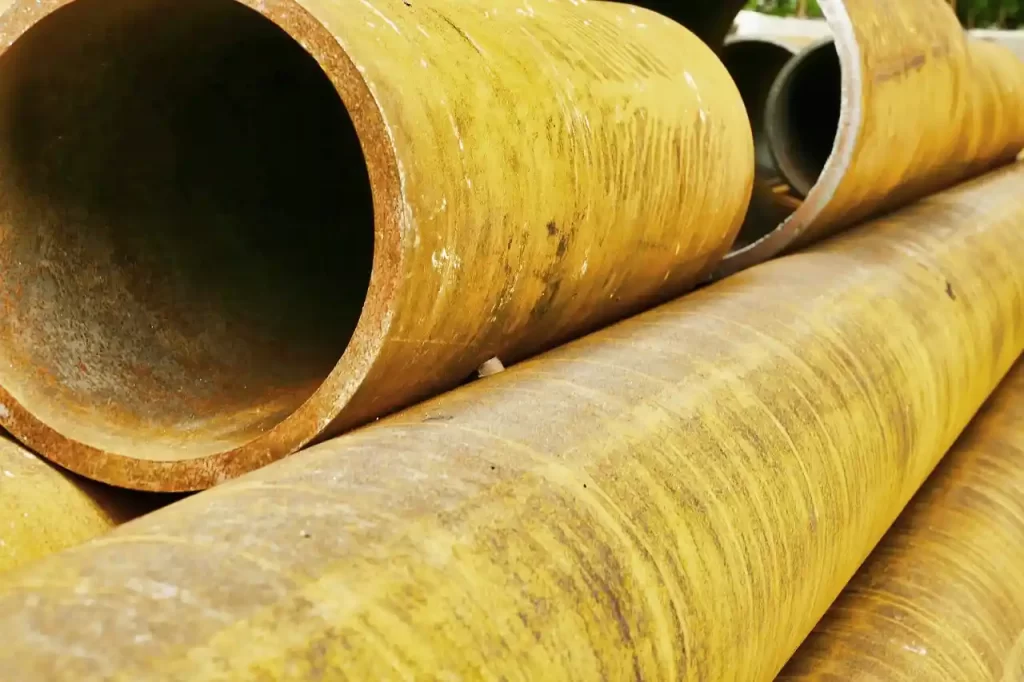
Having the evidence that you did your job correctly can go a long way when working complex high responsibility jobs.
Additionally, induction heating doesn’t create an uncomfortable environment for the welder; there are no dangerous gasses, and requires fewer safety measures.
The biggest con is that the induction heating systems require an upfront investment and training to learn how to get the most out of the system.
Using the Convection Ovens
Specialized industrial preheating ovens use the convection heating method to increase the entire part’s temperature for uniform heating.
Ovens are an excellent solution if you heat parts in batches or need a large part to receive a completely uniform temperature. They can be beneficial when working with base material prone to brittle microstructure formations due to uneven thermal gradients.
Typically, these ovens are expensive, large, and require a lot of power to run. They need to be installed on the spot and are not portable. The part must be brought to the oven and not the other way around.
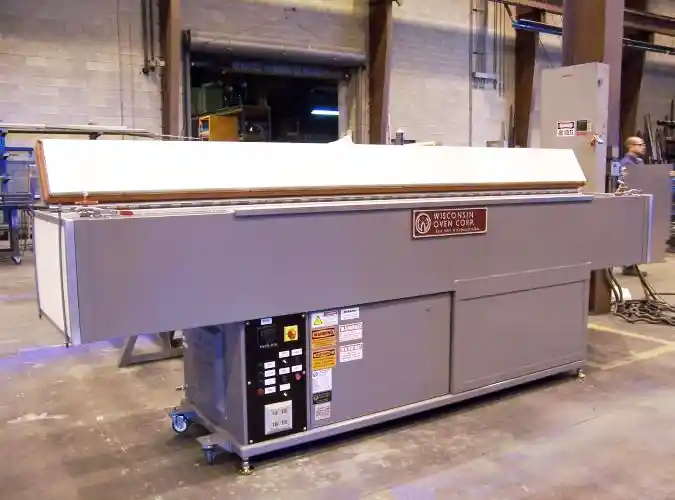
Ovens are also slow and can require several hours to heat up before they can heat the part. Additionally, they have part size limitations, produce an uncomfortably hot environment, and require a substantial electrical connection.
Resistance Heating
Resistance heating is a very accurate method that uses electrically heated ceramic pads to heat the metal directly.
These pads are placed on metal’s surface or wrapped around the piece. They can be tailored to the shape and size of the part. The base material receives radiant and conductive heat.
It’s one of the best methods for complex and large parts where consistency in temperature must be up to the highest standard.
These systems also provide hard data logs and can prove that everything was done up to the code.
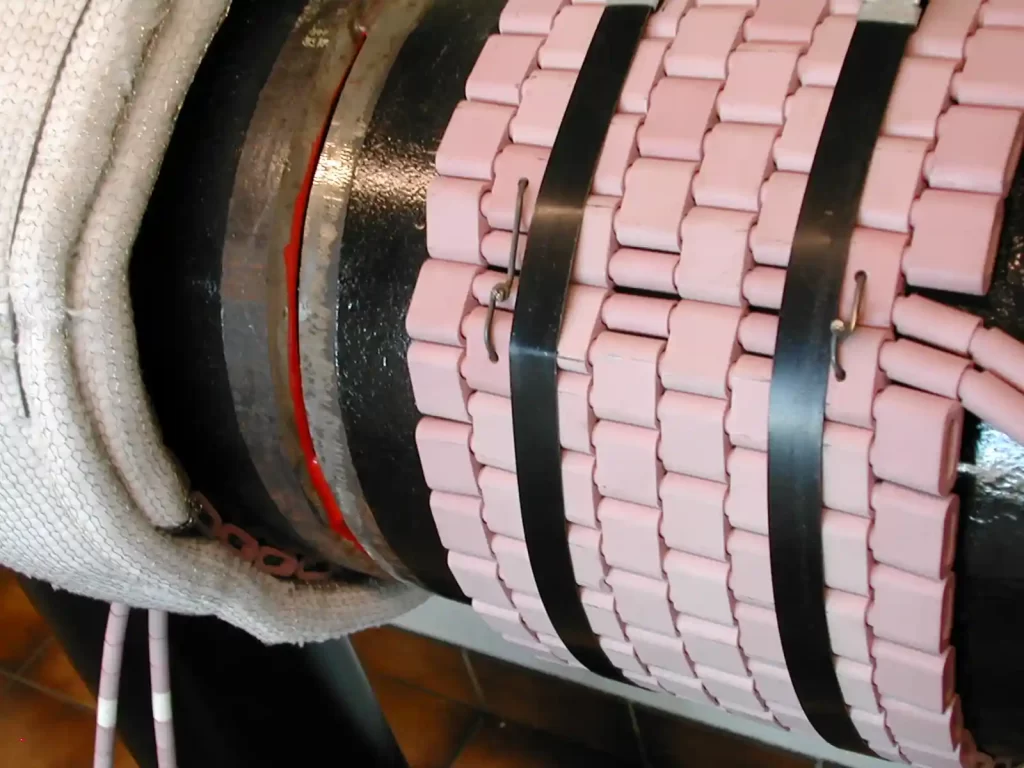
However, the ceramic heating pads must be in top-notch condition. If any of them are damaged or broken, the heat transfer won’t be as uniform. This renders their application inefficient because it takes time and effort to set everything up for complex pieces. It only makes sense to invest in it if the result is perfect. So, when contracting out a third party for resistance heating, make sure that their equipment works well.
This brings me to my final point. These systems are expensive, and their use is typically outsourced. The ceramic pads can get damaged, and since they are costly to replace, a contractor may use the resistance heating elements that should be replaced.
Additionally, these systems often require electricians, a safety crew, and a mechanical engineer on the spot. Pads can get extremely hot, which represents a safety hazard, and their electricity source needs a constant watch.
Bonus Methods For Light Parts In a Hobbyist Environment
Aside from the torch, a DIY hobbyist can also use a heat gun or a regular kitchen oven to preheat the base metal.
If you decide to do something like this, you have to take every safety precaution and never weld something structural or anything where the weld failure will endanger someone.
Remember, you are responsible when cutting corners.
Additionally, you can only use these methods for low-temperature heat treatment. This can be useful when welding stainless and aluminum if the sections are not very thick.
Don’t put a part in the kitchen oven if it’s not completely clean. Oil, grease, and other contaminants will burn and possibly ruin your oven. Additionally, make sure you wash it well after using it for heating the metal. Also, if something happens to the oven, I am pretty sure that the warranty doesn’t cover preheating for welding.. So, that’s something to keep in mind.
The heat gun won’t get you up to high heat, but it can help reach the temperature to get the puddle going when welding aluminum with a low amp output machine. Simply preheating the aluminum to about 125 degrees Farenheight will help get the puddle going and help a weaker machine run the weld.
Preheating Mild Steel For Welding
Mild steel is low carbon steel with a carbon content between 0.05 – 0.30%. It has higher ductility and is less prone to forming brittle structures.
This means that it typically doesn’t require strict preheat temperature accuracy unless otherwise specified.
It will usually be good enough just to reach the minimum preheat temperature with a relatively uniform thermal gradient.
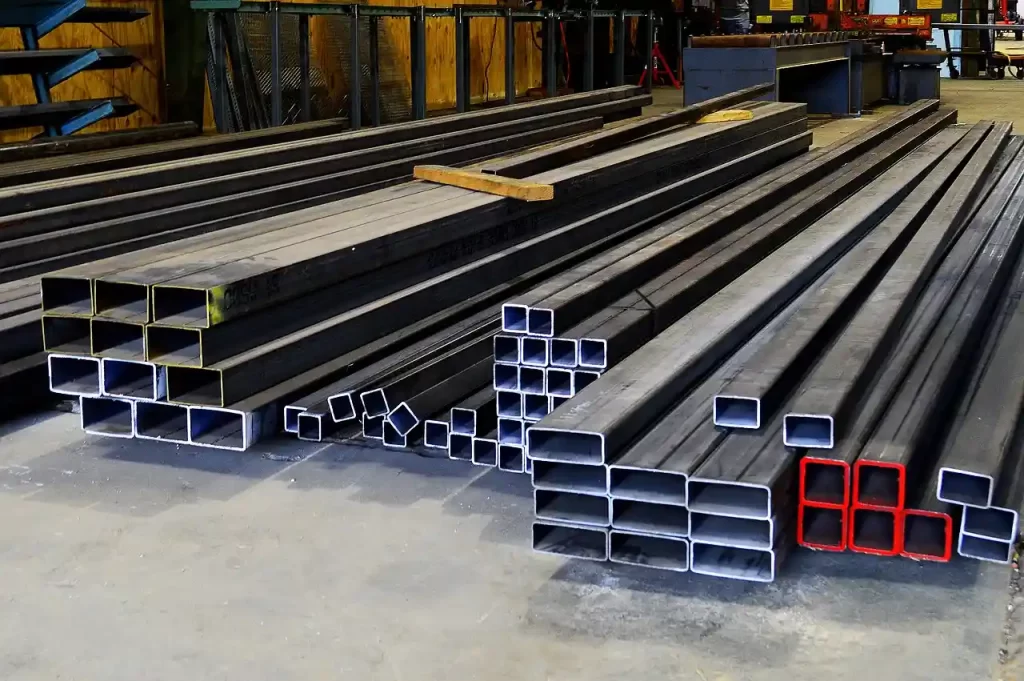
If you are welding a dry, room temperature, mild steel piece, you don’t need to preheat it at all unless it’s over 3/4in thick.
If it’s wet, has moisture on it, or has spent some time outdoors, it’s wise to heat the base metal a little just to get rid of the surface moisture. About 150-200F will be just fine. Additionally, any preheating will help with penetration and weld quality.
If you are welding thick sections over 1in, you will need to preheat it according to the WPS, metal manufacturer’s specification, or the AWS D1.1 code, whichever is available.
Low carbon steels are least prone to cracking and brittleness, so they are the most prevalent metal in the welding industry.
Preheating Medium or High Carbon Steel For Welding
As the carbon content gets higher, the need for preheating goes up as well. Higher carbon means higher strength but lower ductility and increased probability of brittle welds.
Medium carbon steels have a carbon range between 0.30 – 0.45%.
They are more difficult to weld than mild steel and require preheating treatment. But the treatment will depend on what you want to achieve.
For example, preheating the base metal to about 200F and maintaining that temperature while welding will slow down the cooling process just enough to avoid further hardening.
The temperature can vary up to 500F depending on the specification.
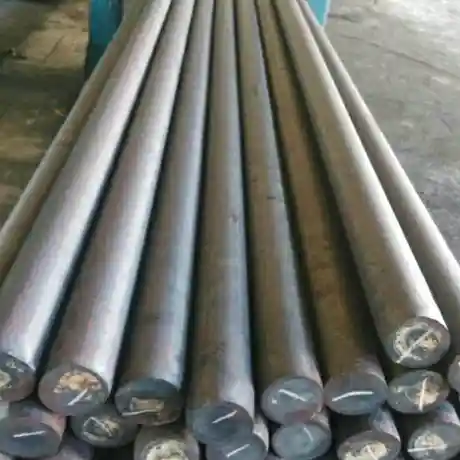
High carbon steels contain carbon content in a range of 0.45% and 1.5%. They are very difficult to weld and require precise preheating and post-weld heat treatments.
Steels with a high carbon content easily develop cracks, excessive hardening, and porosity. Underbead and radial cracks at the fusion zone are the most common.
For high carbon steels, a preheat temperature between 500 – 800F is recommended. But you should always follow the WPS if available.
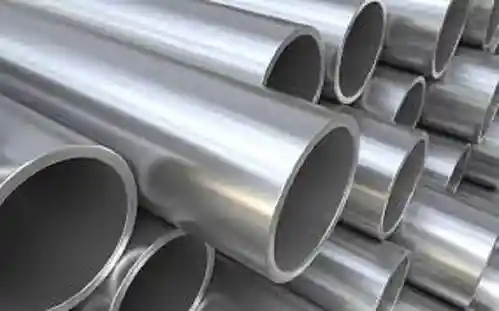
Most medium and high carbon steels need a longer cooling time, and that’s the primary reason why preheat is necessary.
Once you are done welding, the piece will start to cool. During this period, the carbon content needs to rearrange its structure, and if it cools down too fast, it will be brittle and weak leading to a failed weld. If preheated, the part will cool slowly, allowing the carbon in the joint and HAZ to form strong structures.
Thanks to the low ductility of such steels, they can’t handle the shrinkage stresses as easily as low carbon steel. If the joint and surroundings are not preheated, the fast cooling of the weld bead will pull the surrounding metal, and the cracks will develop quickly.
Preheating Stainless Steel For Welding
Sometimes out of a rare necessity, you might need to preheat the stainless. This may be done due to the joint restraint, stainless type, and thickness. If you need to preheat stainless, you should be extra careful, read the specification sheet for that specific alloy, and research it as much as possible.
When welding ferritic stainless steel, preheat should be limited to anywhere between 300 and 450F and applied only to the high carbon ferritic stainless like 430, 434m 442, or 446. The preheat purpose is to prevent delayed cracking and help in removing hydrogen buildup.
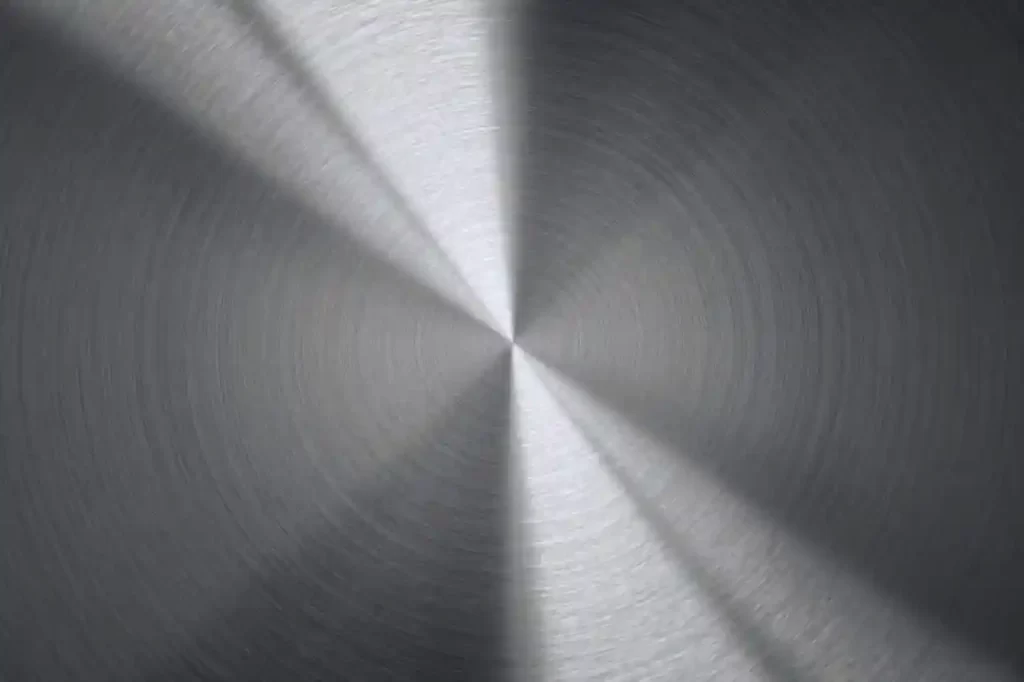
Ferritic stainless steel type doesn’t respond well to heat treatment. It has a crystal structure of iron at room temperature, and there is no transformation or formation of austenite when heated.
For most martensitic stainless steels, it’s recommended to preheat and keep the interpass temperature in the range of 400 – 600F. The reason for preheating martensitic stainless is to prevent the HAZ from hardening and to help any hydrogen escape.
Additionally, if the steel contains carbon content above 0.20%, it will require post-weld heat treatment to soften the weld, improve mechanical properties, and relieve residual stresses.
However, some martensitic alloys have a very high hardenability, and some become brittle when heated and cooled thanks to excessive grain growth at high temperatures. So, be mindful of which alloy you are working with and its specification.
Austenitic stainless steel should not be preheated. That’s because it doesn’t harden by cooling, and any dissolved hydrogen doesn’t become diffusible. This means that it can’t experience delayed cracking like martensitic and ferritic stainless.
Additionally, any heat input should be minimal and applied in as short time frame as possible. This stainless steel type is prone to sensitization of the weld HAZ, which leads to intergranular corrosion in the HAZ. As a result, the corrosion resistance is reduced, and the welded piece becomes compromised.
There is a lot more to be said about stainless steel. A whole book in fact, but these are some basics when it comes to its heat treatment. The general rule is to get acquainted with the specific type and alloy you are working with before deciding if the preheat is necessary. You can learn more about welding this metal in our separate article here.
Preheating Aluminum For Welding
If you have the proper equipment, preheating the aluminum is not going to be necessary. However, since this material has high thermal conductivity, many people like to compensate for the lack of welding power by preheating the metal.
This is fine but only up to about 200F. If you preheat any higher than that, you risk lowering the mechanical properties of the part. Welding itself will reduce the mechanical properties around the weld joint, but if you preheat everything with a high temperature, the entire part will be weakened.
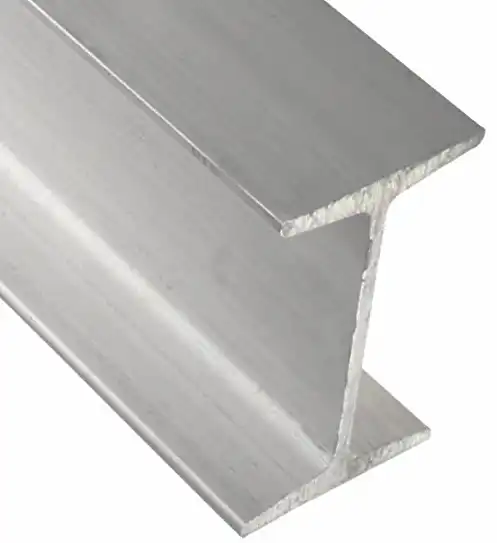
So, if you are welding a thicker piece of aluminum, and you can’t get the puddle going because your equipment doesn’t have enough amperage output, you can improve the situation by preheating. This will help you get the proper penetration.
However, non-heat-treatable alloys shouldn’t be kept above 150F for a long time. This can sensitize them to stress corrosion cracking. Such a defect can lead to the growth of crack formation in this corrosive environment and lead to unexpected, sudden failure when any tensile stress is applied.
When preheating the aluminum, make sure that the temperature is evenly distributed. There shouldn’t be any inconsistent temperature uniformity.
Some welders attempt to overcompensate for weak equipment by preheating the part with temperatures above 600F. This will degrade the material and create undesirable end results.
Heat-treatable aluminum alloys like 6063 or 6061 will experience overageing if you heat them above 300-400F. As a result, its welded tensile strength can be cut in half.
As a general rule of thumb, aluminum shouldn’t be preheated unless specified in the WPS. If your equipment doesn’t have enough amperage output to weld the thick parts, you can preheat to about 200F but not for a prolonged period.
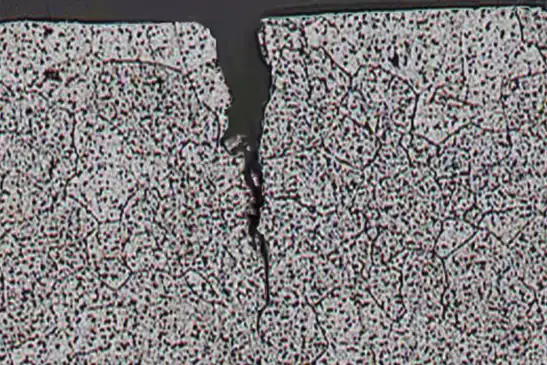
Post Weld Heat Treatment – Cooling Down The Welds
Post Weld Heat Treatment (PWHT) is done to relieve the welded part of residual stresses and micro structural changes which form as the weld cools down.
The PWHT improves ductility while reducing hardness and brittleness.
It softens the heat-affected zone, which enhances toughness, makes the part more stable during the machining, and additionally helps the diffusion of hydrogen to ensure weld quality.
This is a process in which the welded metal is reheated to a temperature below its lower critical transformation temperature, and it’s kept at it for a specified length of time.
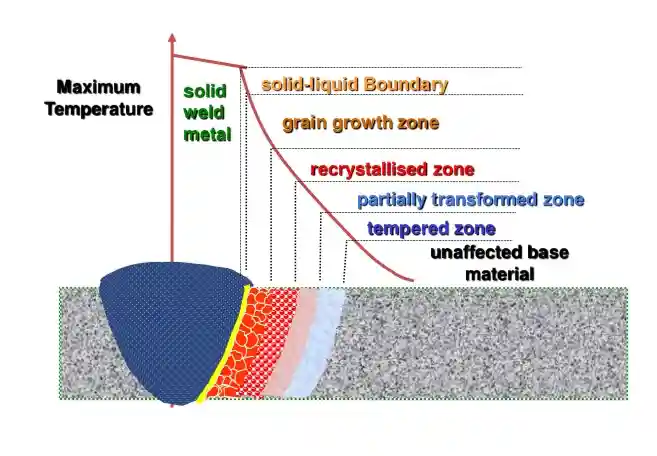
PWHT is typically referred to as any heat treatment after welding. But in the gas, oil, petrochemical, and nuclear industries, it has a specific meaning within the codes of the particular industry. Such industries require specific metallurgical and mechanical properties to provide the safest design.
The PWHT principle is that as the metal piece gets hotter, the elastic modulus and yield stress will fail. Once the point is reached when the yield stress can no longer support the residual stresses, localized plastic deformation will occur.
In plain English, this means that the heated element will become soft enough for it to lose elasticity. As a result, the residual stress around the welded joint and HAZ will distribute properly, and this change will remain even after the part is cooled because this is a plastic change, not elastic.
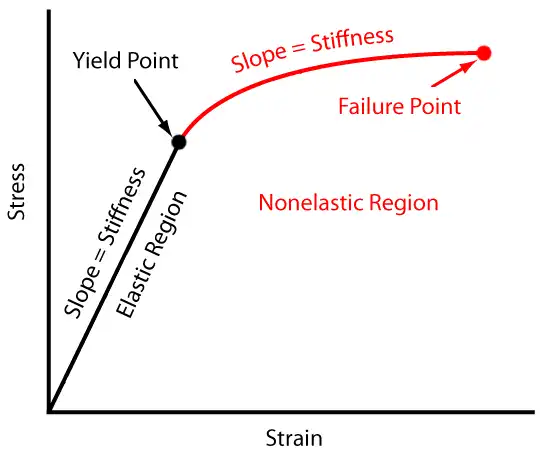
Now that you understand the principle and why the PWHT is done, I have to let you know that this is a very complex process. There are so many rules, codes, and methods that you have to be a welding engineer to understand it. Different metal types, alloys, and stresses the metal will be exposed to highly influence the PWHT process.
There is no one size fits all. So, the best you can do for a regular welding shop environment is research the metal and use your best judgment on what temperature and cooling rate to use when doing PWHT.
However, a rule of thumb is that the joint should be soaked to the peak temperature for 1h for each inch of thickness. This rule highly depends on other factors, so if you are working on something dictated by the welding code, you should abide by it.
Any mistake like overheating the metal, cooling it slower or faster than required, will result in brittleness, cracks, loss of ductility, discoloration, microstructure changes, and others depending on the alloy and metal type. So, when in doubt, consult a specialist.
Conclusion
Preheating and post-cooling are as crucial as the welding itself. Just as you wouldn’t use the wrong filler metal, you shouldn’t mistake the temperatures or heating methods.
When working with low-carbon steel, as most welding requires, you don’t have to be very precise with it. However, any high-carbon, alloy steels, non-ferrous metals, stainless steel, and other specialty metals will require a careful approach, especially for critical welds.
Minor differences in alloy content can cause significant preheat and cooling requirements. It’s when welding such metals that precise temperature measuring and application methods are required.
Resources:
- Preheating for Welding Explained at Lincoln Electric
- Which is important – preheat or interpass? at TWI-Global
- About postweld heat treatment/stress relief heat treatment at TWI-Global
- Preheat in Welding: What Is It and When Should You Use It? at Miller Electric
- Metals and how to weld them, James F. Lincoln Arc Foundation, by Theodore Brewster Jefferson, Gorham Woods
- What The Welding Inspector Should Know About Preheating And Postweld Heat Treatment by ESAB
- The Reasons for and Misconceptions about Preheating Steel by ESAB
- Post weld heat treatment of welded structures, by Welding Technology Institute of Australia
- Preheating can be critical to welding success, at TheFabricator by Caleb Haven
- Stainless Steels Welding Guide, by Lincoln Electric Damian Kotecki, PhD and Frank Armao
- ANSI/AWS D1.1-96 Structural Welding Code: Steel. The American Welding Society, 1996
- Bailey, N. et al, Welding Steels Without Hydrogen Cracking. The Welding Institute, 1973.
- Welding Handbook by American Welding Society





